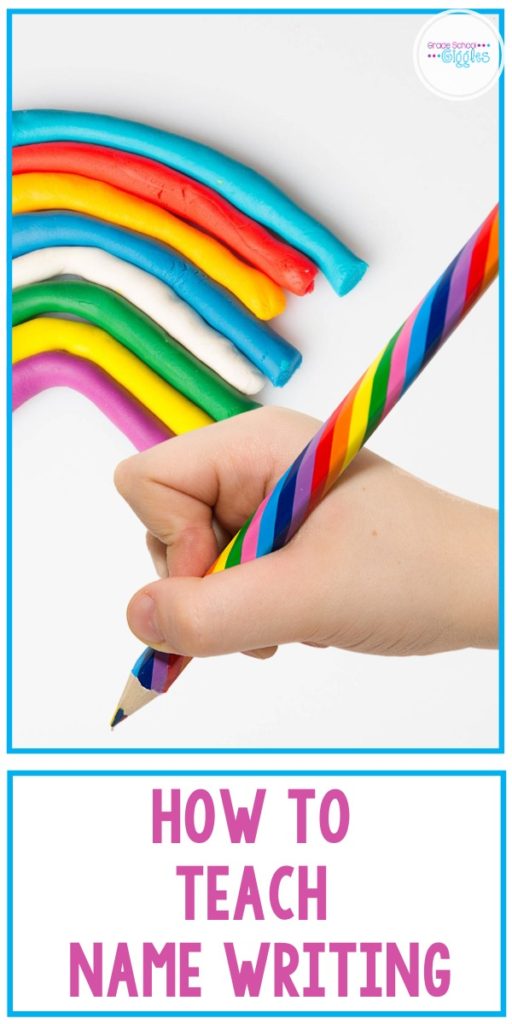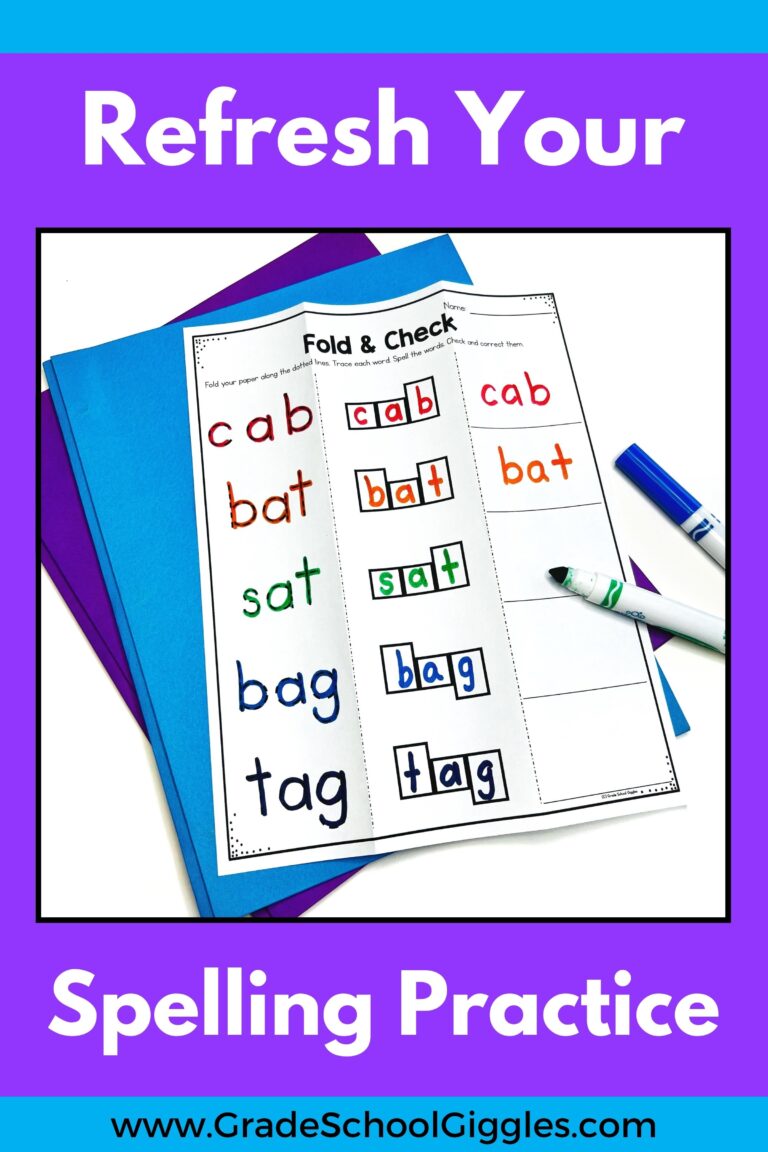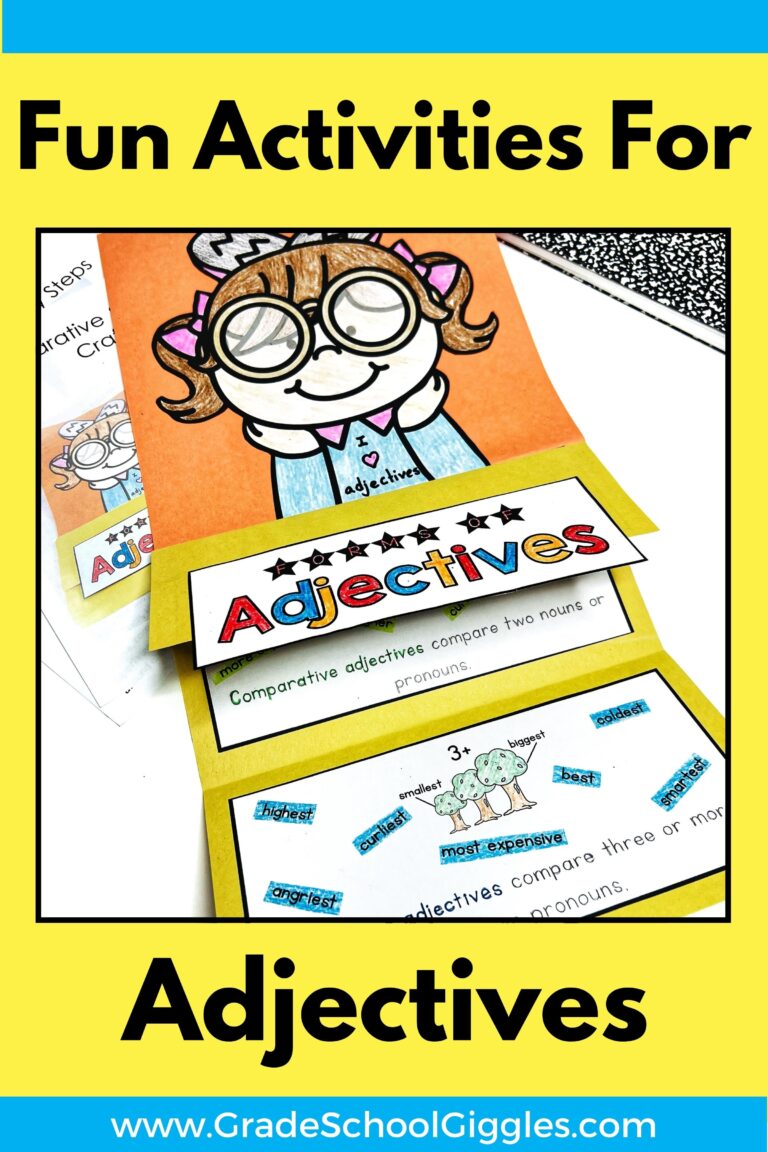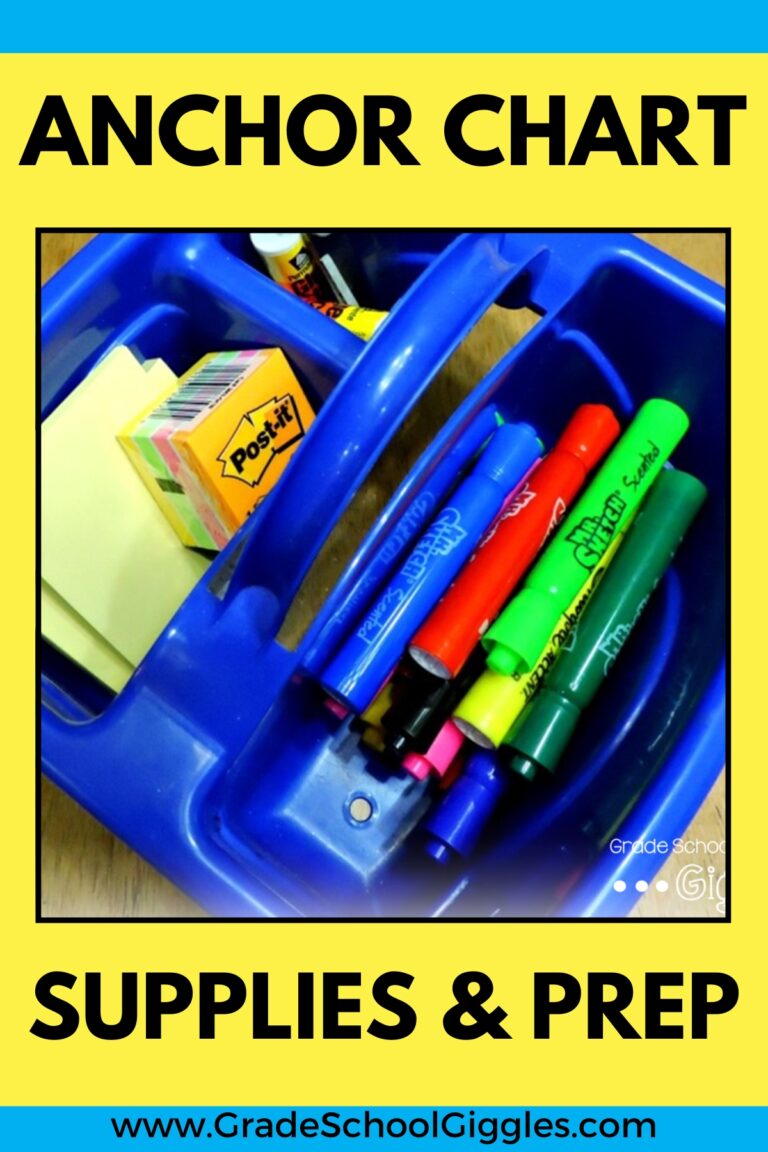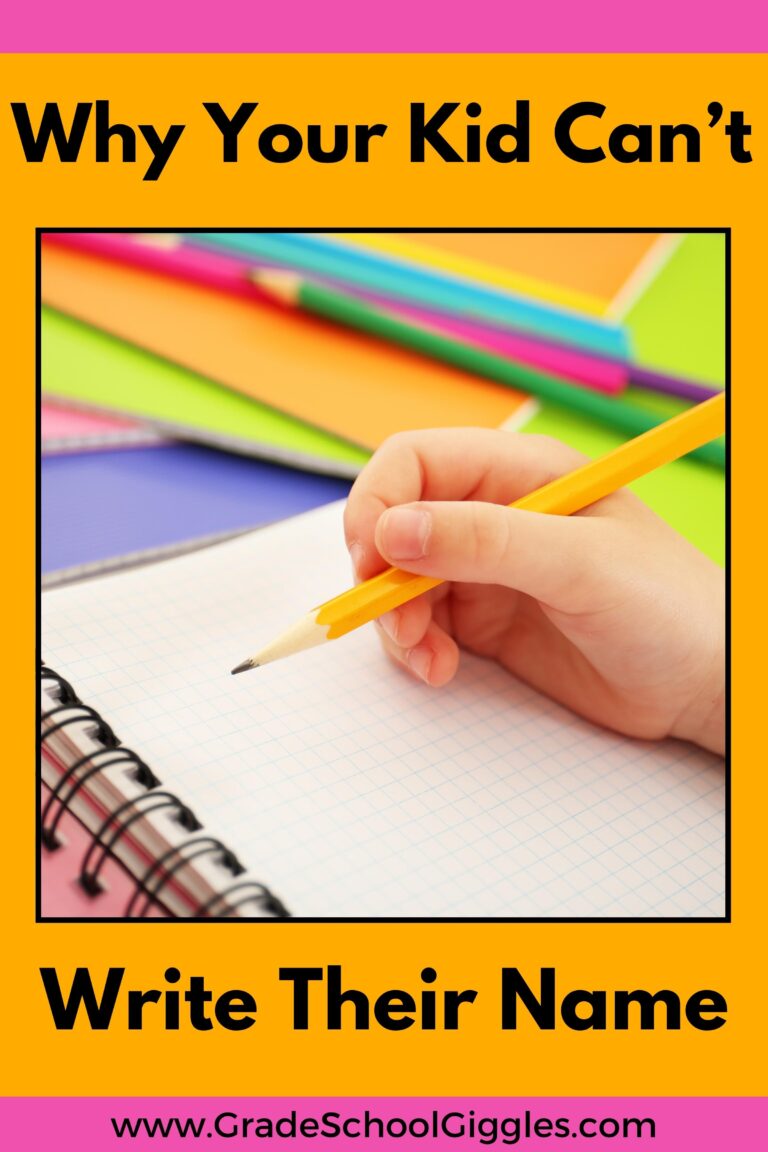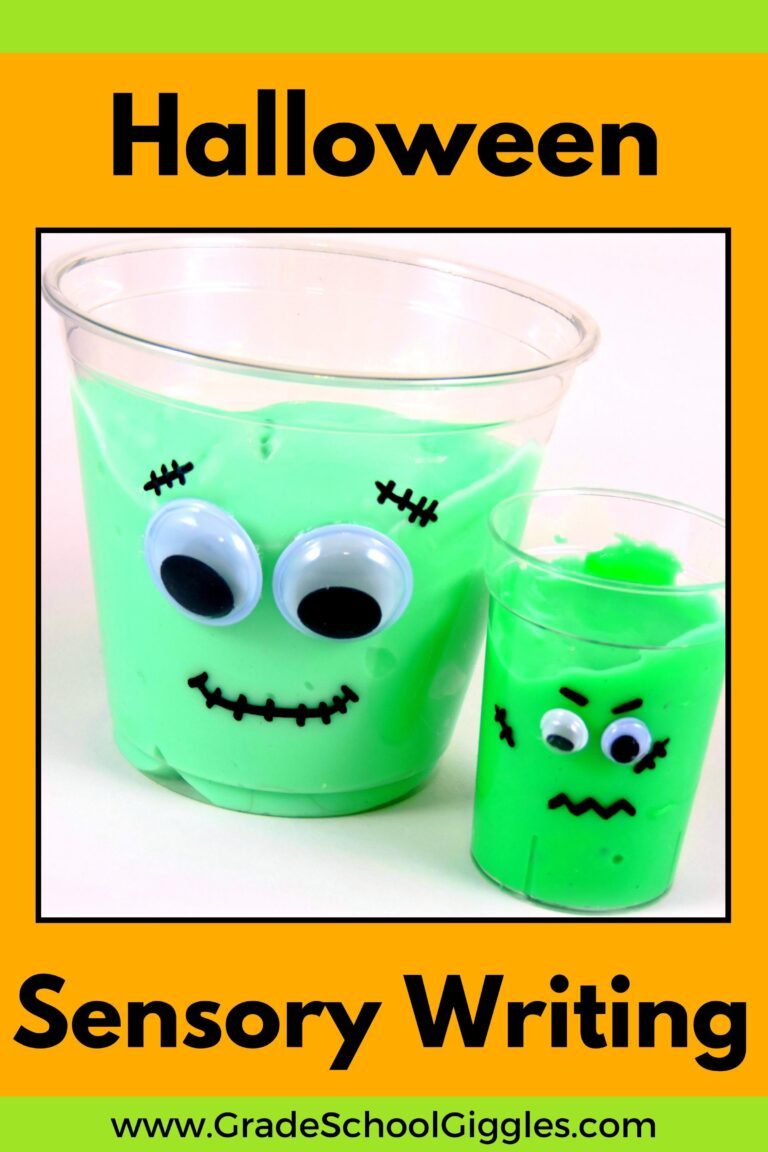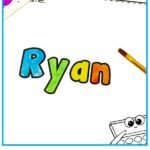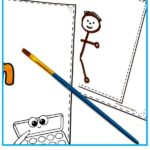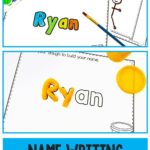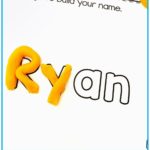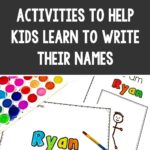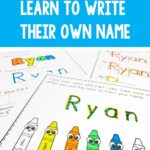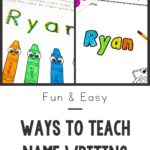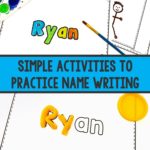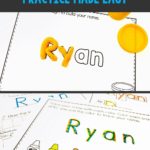Teaching Name Writing Shouldn’t Be Hard
Most kids know their names well before they start school. Knowing how to write their own name is a different matter altogether.
Teaching name-writing shouldn’t be hard. Teaching children to write their own names is definitely a process, but it doesn’t need to be difficult. Wherever your students are in the process, there are some things you can do to help.
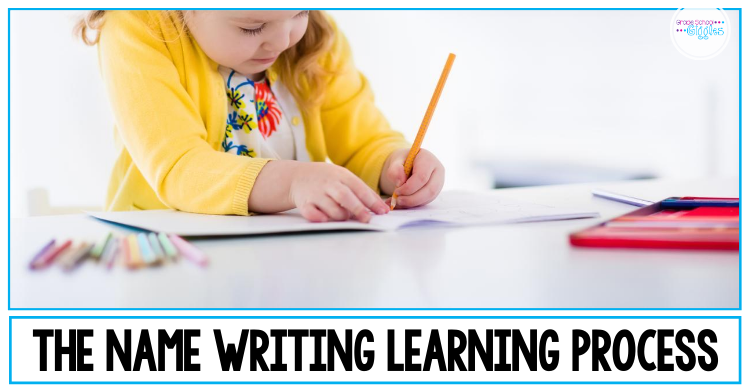
Before you start teaching name-writing, you should be aware of the basic developmental stages that most kids move through along the way. Like with many skills, you’ll find your kiddos will move through the stages at different rates.
- Understanding – Very young children are able to recognize their own name when it’s spoken.
- Recognizing – A child who is starting to recognize shapes and letters may learn to identify their own written name by its shape, length, and possibly some of its letters.
- Spelling – As a child starts learning to recognize and name letters, he or she will start being able to spell his or her name.
- Writing – Once a child has developed sufficient fine motor skills and is able to copy basic lines and shapes, he or she will begin to be able to write his or her own name.
How do you teach kids to recognize and read their names?
Kids don’t need to know all of their letters, but there are some prerequisite skills they should have. If a child is struggling to learn to write their name, there is likely a gap in one of these prerequisite skills.
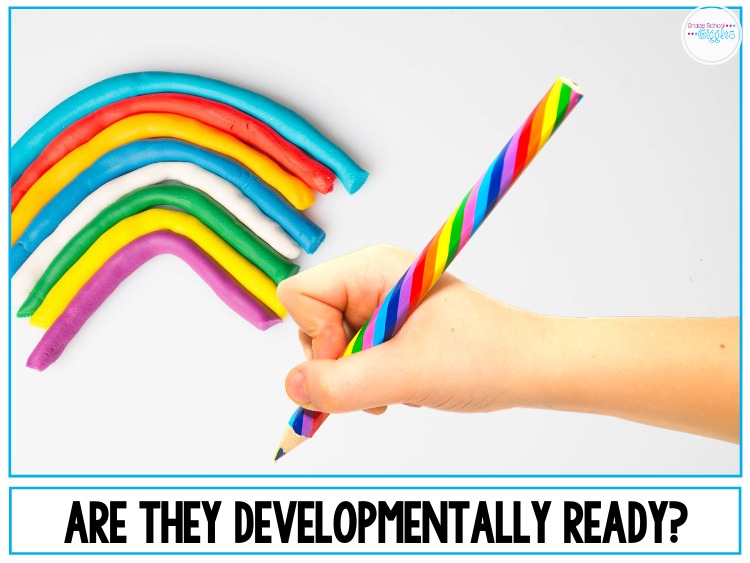
- Fine Motor Skills & Hand Strength – Writing requires a certain level of hand strength and coordination. Kids need to be able to hold and control a pencil. Students with low muscle tone may find it difficult. Playing with playdough, cutting, and other fine motor activities can help.
- Visual Perceptual & Visual Motor Integration – Kids who can’t accurately copy simple lines (vertical, horizontal, diagonal), circles, squares, and triangles may not be ready to learn to write their names. If you have a kindergartener who can’t copy simple lines and shapes, your OT might need to be involved.
- Letter Recognition – Usually, the letters in a child’s name are some of the first letters a child learns to identify. If a child can’t identify the letters in their own name, some targeted instruction can be helpful. The letter videos at Starfall.com are great for this.
How do you teach name-writing?
Teaching name-writing involves a lot of modeling and a lot of repetition at each stage of the process. Since nearly all kiddos understand their spoken name prior to starting school, I’m going to focus on activities for the other three stages. It’s also important to recognize that there is some overlap between each of these stages.
Name Recognition
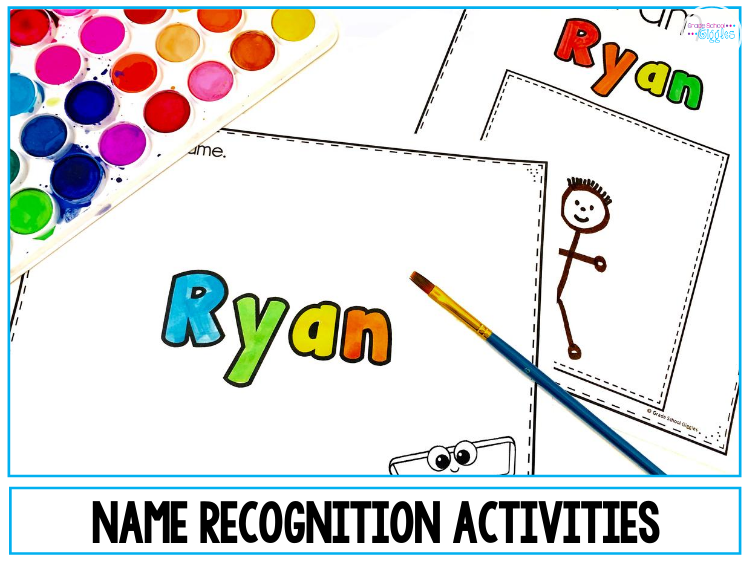
At this stage, children aren’t ready to produce their name, rather they are working on identifying it. Some ways to help children in this stage include:
- Pointing out a name’s shape and length
- Matching the letters
- Coloring their name
- Labeling supplies and desks
- Finding individual nametags each day
Name Spelling
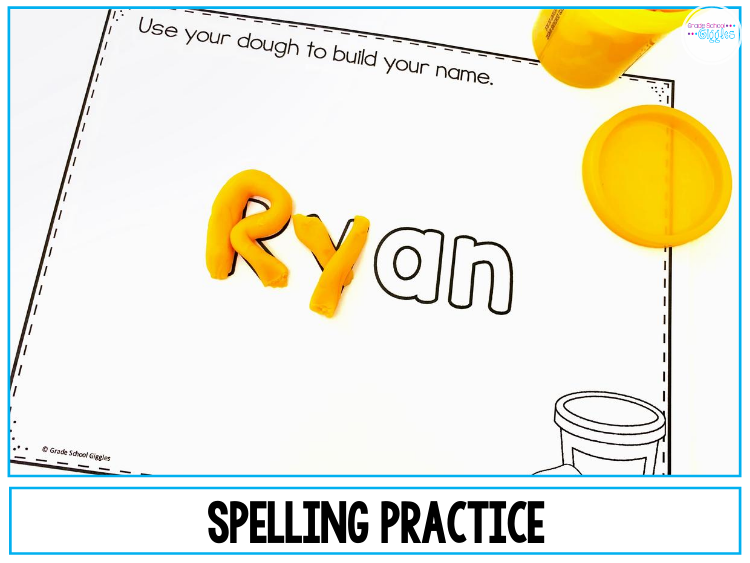
A child at this stage has moved from seeing his or her own name as a shape to recognizing that it is formed by a specific set of letters in a specific order. Some ways to help children in this stage include:
- Singing the letters in their name
- Putting the letters in order using manipulatives
- Building their name with playdough
- Writing letters in sidewalk chalk and having them say the letters as they jump across their name
- Hands-on spelling activities with manipulatives
Name Writing
This is the stage when a child moves from being able to spell their name to being able to write it. At this stage, children will need greater fine motor skills, hand strength, and letter awareness. Modeling how to form each letter is essential.
Prior to kindergarten, children are often taught to write names using all capital letters because capitals are easier to recognize and form. However, if children learn to write their names in all caps, they will have to unlearn it later.
Early name-writing practice should involve multisensory practice rather than lined paper. Non-paper-based activities allow kids to practice their letter formation without the pressure of focusing on sizing and spacing.
- Writing in shaving cream
- Using a whiteboard
- Writing outside with sidewalk chalk
From there, you can move into tracing and writing with dotted lines. Remember, kids are going to need a lot of practice.
What name-writing activities can kids do?
Once kids have built their name-recognition skills through multisensory activities, it’s time to transition to tracing and writing.
Name Tracing
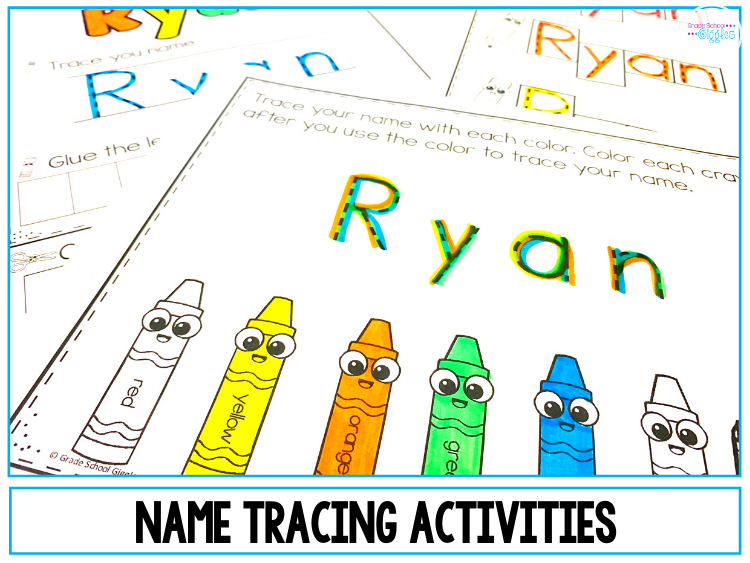
Tracing is a good way to practice the correct letter formation, sizing, and spacing. Focus on teaching the correct top-down letter formation, letter sizing, and spacing. Remember to keep the practice activities short and sweet. Little ones have short attention spans, and developing early writing skills uses muscles that are still developing.
Name Copying
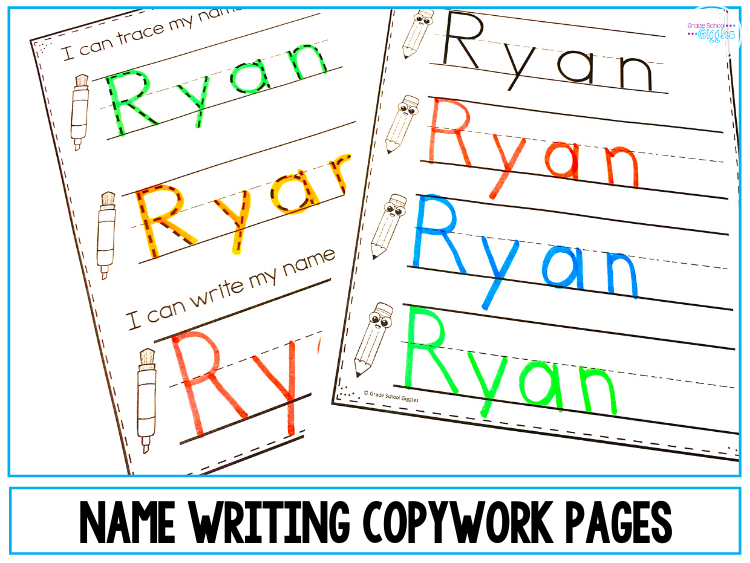
The next step is moving from tracing to copying. Continue modeling letter formation, sizing, and spacing. Watch out for letters that might be written out of order and gently correct those. Remember, this is a big skill for our little friends. It’s important to keep things positive.
Name Writing
With plenty of practice, kids will soon be able to spell and write their names independently. Some kids will be able to write their own names earlier than others. (A student named Sam will probably be able to write his name before a child named Anna-Elizabeth.) If you keep the practice activities short and sweet, provide plenty of practice, and keep it fun, all of your kiddos will get there.
Where can you find the name-writing sheets used in this post?
The name-writing printables shown in this post are all from my editable name-writing practice sheets.
They’re available at my Teacher Pay Teachers Store.
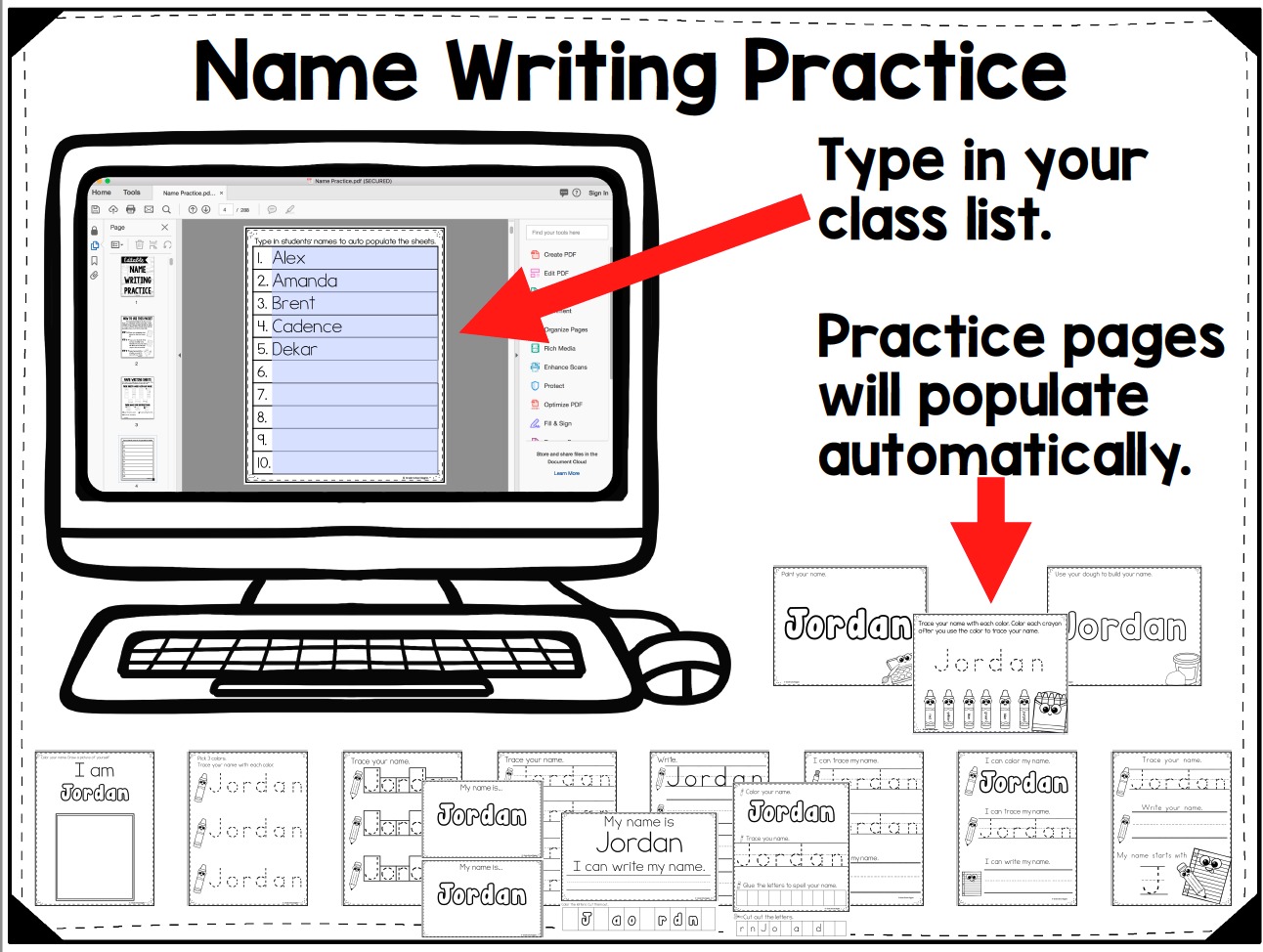
“This resource was excellent for using with my PreK students with learning disabilities… The visuals are clear and easy to use. Very engaging with my students, especially with the differentiation and variety.”
-Jessica
